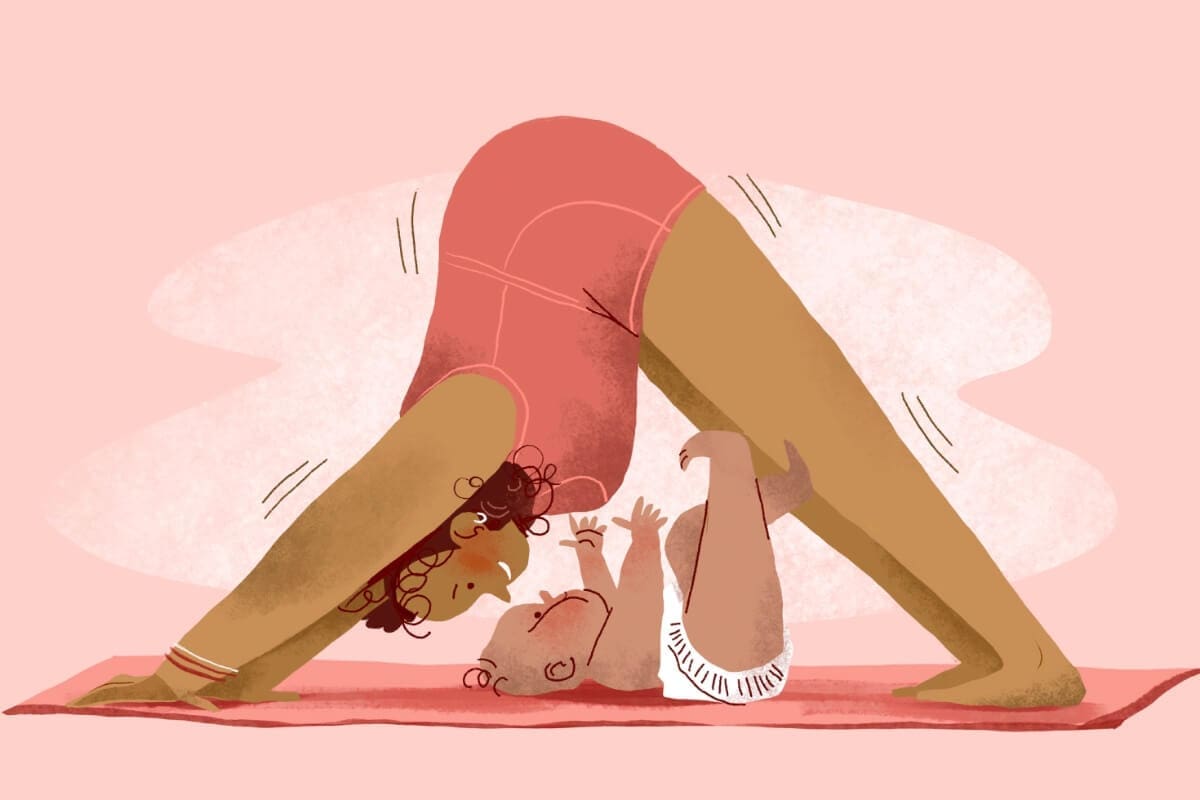
What is attention-deficit hyperactivity disorder (ADHD)?
Attention-deficit hyperactivity disorder (ADHD) is a group of behaviors. It used to also be called attention deficit disorder (ADD). ADHD is common in children and adults. People who have ADHD have trouble paying attention in school, at home, or at work. Even when they try to concentrate, they find it hard to pay attention. Children who have ADHD may be more active or impulsive than what is typical for their age. These behaviors cause problems in friendships, learning, and behavior. For this reason, children who have ADHD are sometimes seen as being “difficult” or as having behavior problems.
Most of what we hear about ADHD is how it affects children. Not as much is known about the way ADHD affects adults. Adults who have ADHD often are diagnosed when they find out their children have ADHD. For adults to be diagnosed, they must have developed symptoms prior to age 12. ADHD may run in families. Hyperactivity is more common in boys. However, other symptoms (especially inattention) are more common in girls. Some people who have ADHD may have other conditions as well. These could include learning disabilities, anxiety, depression, oppositional defiant disorder (ODD), bipolar disorder, and Tourette syndrome. Also, these conditions can be mistaken for ADHD, so it is important to work with health care professionals for a diagnosis.
Symptoms of attention-deficit hyperactivity disorder (ADHD)
People who have ADHD have difficulty organizing things, listening to instructions, remembering details, and/or controlling their behavior. This can make it difficult to get along with other people at home, at school, or at work.
A person with ADHD who has difficulty paying attention will have 6 or more of the following symptoms:
- Difficulty following instructions
- Difficulty keeping attention on work or play activities at school, work, and home
- Losing things needed for activities at school, work, and home
- Appearing not to listen
- Doesn’t pay close attention to details
- Seems disorganized
- Trouble with tasks that require planning ahead
- Forgetting things
- Is easily distracted
A person with ADHD who is hyperactive or impulsive will have at least 6 of the following symptoms:
- Fidgety
- Runs or climbs inappropriately
- Can’t play quietly
- Blurts out answers
- Interrupts people
- Can’t stay in seat
- Talks too much
- Is always on the go
- Has trouble waiting his or her turn
What causes attention-deficit hyperactivity disorder (ADHD)?
People who have ADHD do not make enough chemicals in certain areas in the brain that are important for organizing thoughts. Without enough of these chemicals, the organizing centers of the brain don’t work well. This is thought to be the cause of ADHD. The shortage of chemicals may be due to a person’s genes (research shows that ADHD is more common in people who have a close family member with the disorder), environment, or physical development. Recent research also links smoking and other substance abuse during pregnancy to ADHD. Exposure to environmental toxins, such as lead, also can be a factor.
ADHD is not caused by eating sugary foods.
How is attention-deficit hyperactivity disorder diagnosed?
A doctor will be better able to diagnose ADHD when getting information about your child’s behavior. It may take information from several people who know your child (teachers, daycare providers). Your doctor also may have forms or checklists that you and your child’s teacher can complete. This will help you and your doctor compare your child’s behavior with other children’s behavior.
Unfortunately, many people try to diagnose themselves by using a quiz or a checklist they find in a magazine or see on TV. However, it’s best to see your doctor. Some of the questions your doctor may ask you or about your child include:
- Do you have problems paying attention and with hyperactivity? Have you had these problems since you were a child?
- Do you have a hard time keeping your temper or staying in a good mood?
- Do you have problems staying organized or being on time?
- Do these problems happen to you at school, work and at home?
- Do family members and friends see that you have problems in these areas?
- Do you have any physical or mental health problems that might affect your behavior? (Your doctor may give you a physical exam and do tests to see if you have any medical problems with symptoms that are like ADHD.)
Your doctor will probably want to test your child’s vision and hearing if these tests haven’t been done recently. A person diagnosed with ADHD will have had symptoms for at least 6 months.
Also, it might be hard for your doctor to tell if your child has ADHD. Many children who have ADHD aren’t hyperactive in the doctor’s office. Your doctor may ask you to fill out a questionnaire regarding your child’s behavior patterns. Eventually, your doctor may want your child to see someone who specializes in children’s behavior.
The American Academy of Family Physicians (AAFP) recommends that any child 4 through 18 years of age should be evaluated for ADHD if they have academic or behavioral problems, and symptoms of inattention, hyperactivity, or impulsivity.
Can attention-deficit hyperactivity disorder (ADHD) be prevented or avoided?
ADHD cannot be prevented or avoided. However, doctors believe that avoiding smoking and substance abuse during pregnancy can lower the baby’s risk of developing ADHD. Still, there’s no guarantee that doing everything right during pregnancy will protect a baby from developing ADHD. Additionally, exposure to environmental toxins, such as lead, also can be a risk factor for ADHD.
Attention-deficit hyperactivity disorder (ADHD) treatment
Some of the medicines used to treat ADHD are called psychostimulants. They include methylphenidate, dextroamphetamine, lisdexamfetamine dimesylate, and a drug that combines dextroamphetamine and amphetamine. These medicines have a stimulating effect in most people. However, they have a calming effect in people who have ADHD. These medicines improve attention and concentration and decrease impulsive and overactive behaviors. Your doctor may consider other non-stimulant medicines, such as atomoxetine, clonidine, desipramine, imipramine, and bupropion.
All medicines have side effects. Psychostimulants may decrease your appetite and cause a stomachache or a headache. The loss of appetite can cause weight loss in some people. This side effect seems to be more common in children. Some people have insomnia (trouble sleeping). Other possible side effects include fast heartbeat, chest pain, or vomiting. To avoid or reduce the side effects of psychostimulants, follow these tips:
- Use the lowest possible dose that still controls the hyperactivity or inattention. Your doctor will work with you to find the right dose.
- Take the medicine with food if it bothers your stomach.
- Ask your doctor if you can skip the medicines on the weekends.
- Offer healthy snacks to children who lose weight while taking medicine for ADHD.
- Take the medicine 30 to 45 minutes before a meal. Lunchtime doses can be given at school for some children. If your child can’t take this medicine at school, tell your doctor. They might suggest a long-acting form of the medicine instead. If you are taking the long-acting form of this medicine, do not crush, break, or chew it before swallowing it.
It’s important to take the medicine the way your doctor prescribes it. Follow your doctor’s advice, even if you think the medicine isn’t working. Medicines used to treat ADHD have been shown to improve a person’s ability to do specific tasks. This includes paying attention or having more self-control. The length of time a person will need to take medicine depends on each person. Some people only need to take medicine for 1 to 2 years. Others need treatment for many more years. In some people, ADHD may continue into adolescence and adulthood.
People who have ADHD should be checked regularly by their doctors. If your child has ADHD, your doctor may suggest that they take a break from their medicines once in a while to see if the medicine is still necessary. School breaks or summer vacation might be best.
AAFP suggests several treatment recommendations. Preschool-aged children (4-5 years of age) should be treated with behavior therapy as the first line of treatment. The medicine methylphenidate may be prescribed if behavior treatment does not provide significant improvement. Your doctor may recommend this medicine if ADHD is interfering with the child’s friendships, home, and school life at a moderate to severe level. Elementary school-aged children (6-11 years of age) may benefit from FDA-approved medicine for ADHD and behavioral therapy. Adolescents (12-18 years of age) are more likely to benefit from treatment with FDA-approved medicine but should also incorporate behavioral therapy to help build and maintain organizational skills. In all cases, medicine doses should be measured and adjusted to achieve maximum benefit with few adverse effects.
Living with attention-deficit hyperactivity disorder (ADHD)
Symptoms of ADHD often get better as children grow older and learn to adjust. Hyperactivity usually stops in the late teenage years. But about half of children who have ADHD continue to be easily distracted, have mood swings, hot tempers, and are unable to complete tasks. Children who have loving, supportive parents or guardians who work together with school staff, mental health workers, and their doctor have the best chance of becoming well-adjusted adults.
Children who have ADHD may be difficult to parent. They may have trouble understanding directions. Their constant state of activity can be challenging for adults. Some children benefit from counseling or from structured therapy. Families may benefit from talking with a specialist in managing ADHD-related behavior and learning problems.
Children who have ADHD also tend to need more structure and clearer expectations. You may need to change your home life a bit to help your child. Here are some things you can do to help:
- Make a schedule.
- Make simple house rules.
- Make sure your directions are understood.
- Reward good behavior.
- Make sure your child is supervised all the time.
- Watch your child around his or her friends.
- Set a homework routine.
- Focus on effort, not grades.
- Talk with your child’s teachers.
If your child has ADHD, it is a good idea to work with their school to help them be more successful. This could include putting together an individualized education plan (IEP) for your child or a 504 plan. These plans ensure that your child is receiving any accommodations they may need to help them learn in the most appropriate environment.
If your doctor thinks you have ADHD as an adult, he or she may suggest counseling. Your doctor also may recommend testing and counseling with someone who specializes in treating ADHD. You can learn ways to change your work environment and keep distractions to a minimum. Organizational tools can help you learn how to focus on activities at work and at home. Many people who have ADHD find counseling helpful. A lifetime of ADHD behaviors and problems can cause low self-esteem and problems with relationships. Individual counseling and support groups may help you with these problems.
Questions to ask your doctor
- Why does my child have attention and hyperactivity problems at home, but not at school?
- Will medicines change my personality and make me sluggish?
- Is it possible to overdose on ADHD medicine?
- Is it important to take the medicine consistently or just when you feel you need it?
- Should I make any changes to my child’s diet?
- Should I limit my child’s screen time (TV, computer, video games)?
![]()
Copyright © American Academy of Family Physicians
This information provides a general overview and may not apply to everyone. Talk to your family doctor to find out if this information applies to you and to get more information on this subject.













